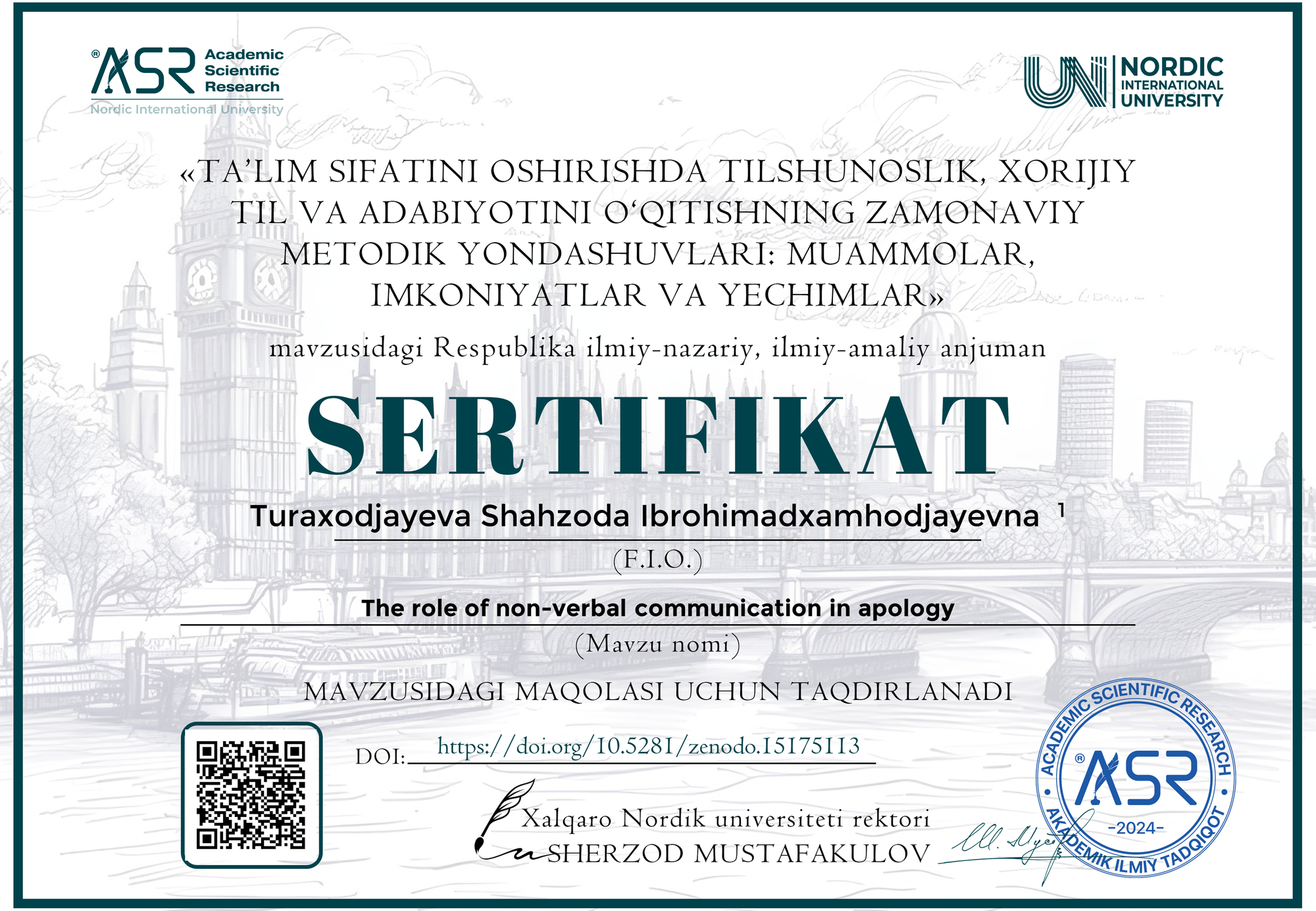Turaxodjayeva Shahzoda Ibrohimadxamhodjayevna 1

DOI: https://doi.org/10.5281/zenodo.15175113
Google scholar: https://scholar.google.com/scholar?hl=ru&as_sdt=0%2C5&q=%22THE+ROLE+OF+NON-VERBAL+COMMUNICATION+IN+APOLOGY%22&btnG=
Zenodo community: https://zenodo.org/records/15175113
Nordic_press journal: https://research.nordicuniversity.org/index.php/nordic/article/view/2267
MAQOLANI YUKLAB OLISH
SERTIFIKATNI YUKLAB OLISH
REVIEW:
This article provides a comprehensive and insightful analysis of the importance of non-verbal communication—particularly body language, facial expressions, gestures, and tone—in conveying the sincerity and emotional depth of apologies. Drawing on a wide range of interdisciplinary sources from linguistics, psychology, and communication studies, the author successfully outlines the various components that shape human interaction beyond spoken words.
Strengths:
Interdisciplinary Integration:
The article effectively combines theories from multiple fields, including pragmatics, non-verbal communication, and interpersonal psychology, creating a robust foundation for the topic.Wide Scope of Non-Verbal Cues:
The study goes beyond simple gestures and explores detailed aspects of body posture, eye contact, physical space, touch, and voice quality—all of which are crucial in apology scenarios.Cultural Sensitivity:
The author briefly touches on how different cultures interpret non-verbal cues differently, which adds valuable perspective and relevance for global communication.Practical Recommendations:
The conclusion offers applicable strategies for improving non-verbal communication, such as managing stress, developing emotional awareness, and understanding silent signals.Clarity and Accessibility:
The writing is clear and well-structured. Key terms are explained effectively, and the examples provided make the theoretical content relatable and easy to follow.Suggestions for Improvement:
More Empirical Data:
While the article is conceptually strong, incorporating some observational or survey data—such as how people perceive apologies in real-life scenarios—would greatly strengthen its academic rigor.Cross-Cultural Case Studies:
Including brief comparisons of apology behavior in different cultures would enrich the analysis and support the thesis more deeply.Refinement of Language in Abstract:
Minor grammatical and syntactical improvements in the abstract and introduction would enhance professionalism and readability.Conclusion and Recommendation:
This article is a well-researched and thoughtful contribution to the study of non-verbal communication, particularly within the emotionally and socially significant act of apologizing. Its multidisciplinary approach, coupled with practical insights, makes it relevant for both scholars and practitioners in communication, education, psychology, and interpersonal relations.



